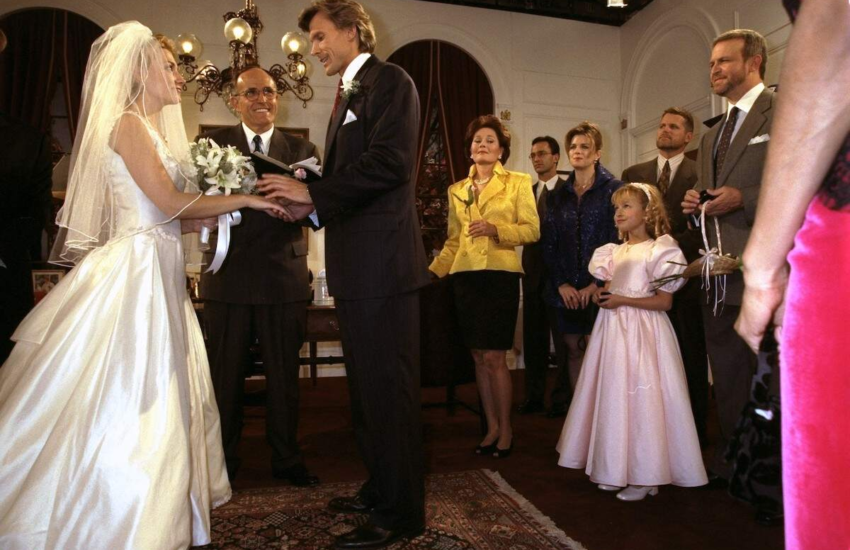Soap operas are some of the most popular TV shows around, from the larger-than-life characters to the twisty plotlines. Whether you love them or hate these dramatic onscreen stories, you can’t deny their longevity in the entertainment world. So, one question remains: Why are they called soap operas?
Ryan’s Hope premiered on this day in 1975!
Did you watch this 70s Soap Opera? pic.twitter.com/pCLxnZcKlL
Soap operas were born in the 1930s, reports Brittanica, with radio broadcasts of 15-minute episodes full of drama and interesting characters. The shows typically revolved around a large, middle-class family in a small town or city. Each episode followed the characters as they dealt with drama at home and work.
When TV came along, the soap operas moved there and the episodes grew to 30 minutes. The shows were shown during the late morning and early afternoon, catering to housewives and stay-at-home mothers.
By the ’70s, the tone of soap operas changed. Instead of stories about family life and good triumphing over evil, episodes made themes like promiscuity, violence, and drug use more central.
The shows also dealt with important issues of the day, such as abortion, spousal abuse, and sexually transmitted diseases, and diversified their casts with characters of different races, ethnicities, and sexualities.
So, how did the popular shows get their names? The “opera” part comes from the drama of the programs. Stage operas from composers like Mozart and Puccini dealt with adulterous affairs, doomed lovers, and murder — all themes that can be seen in the soap operas of today.
As for the “soap” part, it’s as simple as looking to early sponsors of the radio shows. Soap companies and manufacturers used the radio broadcasts as advertising. They often commissioned the shows, using the frequent ad breaks to advertise their soaps, according to CMuse.
#OperaExplained Stars like Brandon Jovanovich have had roles in soap operas too — but how did the soap opera get its name?
In the 1930s, brands used radio dramas to peddle items like Ivory soap. But “opera” was already shorthand for drama: Westerns were called “horse operas!” pic.twitter.com/pU4ct3M3GO
Soap operas almost had a very different name. Around the same time the phrase “soap opera” was gaining traction, “horse operas” also started getting popular. Horse operas were Western stories, filled with cowboys, ranches, and other horse-related tales.
From The Young and The Restless to General Hospital, plenty of soap operas still air these days. The series have developed their own signature looks, which involve sets and lighting.
In terms of lighting, soap operas use a different method than other shows, as Mental Floss explains. Instead of the traditional backlighting method, soap operas evenly light the entire set. This means the lighting doesn’t have to be reset every time the actors move, allowing for fewer takes and less money spent.
‘As the World Turns’ and ‘The Edge of Night’ Changed Soap Operas Forever
Soap operas used to be shot on tape, giving them a distinct look. When the medium shifted to digital, soap operas kept that hyper-real quality by keeping the frame rate the same. The shows also typically make use of static cameras. Instead of the camera moving with the actors, the scenes will cut abruptly between two different cameras.
India McCarty
Contact at [email protected]

